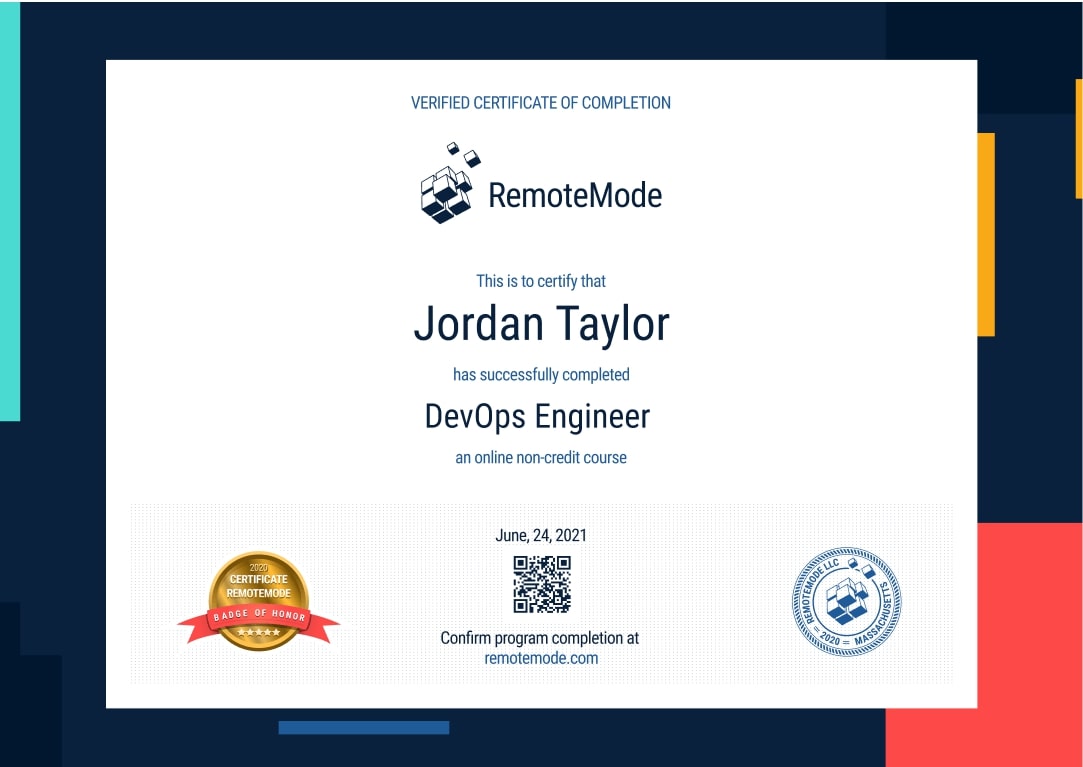Become a Java Developer SE 9
Start to develop Java-based software functions and services using today's industry-leading tools and frameworks which have already become part of a process for more than 64.000 companies and start-ups in the USA.
- 5 month
- 162 lessons
- 5 hours per week
- 117 hours



Java Developer SE 9 Mission Forecast
Landing Zone
The software development sector is rapidly growing, with Java maintaining a leadership position. Job growth is expected to increase by 22 percent in the new decade. This means that almost 2 million jobs will be created by 2029. Almost all sectors plan to expand their digital presence.
More than 300,000 new job positions will need certificated specialists. Salaries are planned to rise as the demand for Java Developers expands.
Mission Objective (Who are Hiring Right Now)
Java Developer SE 9 Overview
Main duties of Java Developers SE 9:
- + 5 Month Courses
- + 5 Hours/Week Self-study
- + 162 On-demand Lessons
- + 117 Hours of training materials
- + Certificate
- + Practise on Topical Real-life Project
- Develop programs to update data.
- Write codes for functions and services to interact with front-end apps.
- Test codes for compliance and accuracy.
- Resolve and debug technical questions.
- Support and upgrade current programs.
Prepare for Liftoff
Java Design Patterns
Crucial to programming, Java design patterns remain significant as they function as toolkits for scripting problems and errors. This eight-part lecture then provides a comprehensive discussion of these well-proved solutions. More so, this tutorial is presented so that course takers will achieve the following objectives:
- Learn how to implement several design patterns in Java
- Understand the technical usage of each design pattern
- Know the importance of their implementation
- Demonstrate Java design patterns’ best practices
- Acquire design pattern skills necessary to become an expert Java developer
Overview Design Patterns
The introduction discusses the fundamentals of design patterns, each of which is given thorough explanation. They are classified into two categories (Core Java and JEE), and their subcategories are also enumerated including creational, structural, and behavioral design patterns. Their importance and the best time to implement them are also discussed to create a holistic and solid structure for course takers.
Observer and Decorator Patterns
The lecture talks about observer and decorator patterns, two programming solutions that hold a level of relevance for cases of one-to-many relationships and keeping solid class methods. This will see the implementation of both design patterns starting from creating classes to using them until the codes are ready for verification.
Factory and Singleton Patterns
This succeeding lecture thoroughly compares and contrasts the Factory and Singleton patterns, two solutions that prove to be effective for instance redirection, recreation, and retrieval. More so, their advantages are discussed simultaneously with their implementation.
Adapter and Façade Patterns
Considered as effective tools to resolve incompatibility and multiple components, the implementation of the Adapter and Façade patterns are discussed. Apart from this, they are put into deeper study so as to understand their importance, the best time of their implementation, and their advantages over other existing design patterns.
State and Proxy Patterns
Covered in this separate lesson are the theoretical and operational definitions, method of implementation, technicality, and function of the State and Proxy patterns. In addition to this, the latter’s subcategories are explored including remote, virtual, and protection proxies. Lastly, the use of Invocation Handler is demonstrated.
MVC and Builder Patterns
A separate section is dedicated for the discussion of Model-View-Controller and Builder patterns, creational solutions intended to implement systematized programming approach and divide pressing concerns of applications. Similar to the preceding lectures, this lesson makes use of comparison to provide an authoritative discussion of their relevance. Finally, their implementation in Java and their innate benefit are presented.
Prototype and Mediator Patterns
For those struggling to fix prototypal inheritance and creation, as well as sharing of subjects, this lecture will discuss two patterns that would resolve these issues. The Prototype and Mediator patterns are well-used solutions and their utilization are meticulously presented. In addition to this, their advanced usages are directly presented right after their basics.
Memento, Interpret, and Bridge Patterns
The final part of this Java design pattern series talks about the Memento, Interpret, and Bridge patterns. They are given their separate explanation, all of which are equipped with introduction, implementation, and summary. Finally, their importance, relevance, and advantages are outlined so as to understand their principles and best practices.

Mission control
- Study at the course with experienced mentors and tutors
- Take part in Virtual Lab projects to upgrade your portfolio
- Control your results in the Dashboard and win the competitions with others students
- Use Activity Tracking Log to control your progress
- Take a step closer to your job of dream with interview prep and upgrading SV
In partnership with
Set your trajectory (123 video 40 hours)
Certificate of Completion
- Certification recognized by industry companies
- Real project from virtual labs
- The program built on 100% self-study
- Course videos and subtitles
- Practical quizzes
- Mentored by high-class specialists

Grow into a Java Developer SE 9
Start to develop Java-based software functions and services using today's industry-leading tools and frameworks which have already become part of a process for more than 64.000 companies and start-ups in the USA.
Learning program
- 5 months duration, 5 hours per week
- 162 lessons, 117 hours
- 100 % flexible timetable
Virtual lab
- Real projects
- GitHub portfolio
- Experts feedback
Career Services
- Interview prep
- SV writing
- Filling LinkedIn profile
Request More Information
View pricing and financing options